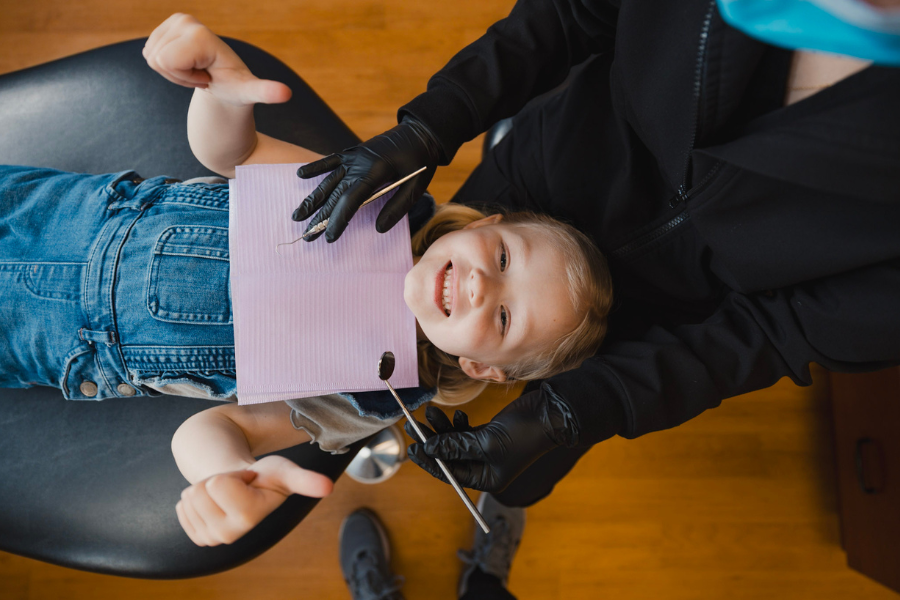When you’re at the store picking up toothbrushes, it’s a little overwhelming how many options there are! Are they all the same? What does bristle strength mean? Is a kid’s toothbrush really better for kids? In this article, we will answer all of these questions and hopefully help you choose the best toothbrush for your child.
How Often Should I Replace My Child’s Toothbrush?
Toothbrushes need to be replaced every 3-4 months. Overtime, the bristles are worn down and become less effective. Bacteria is also introduced into the brush as it ages, which can introduce bacteria into the gumline and bloodstream.
Keep an eye on the bristles as your child brushes their own teeth. If the bristles become squashed soon after you’ve bought the toothbrush, your child might be brushing their teeth too hard. Teaching them to brush in soft circles on all surfaces of the teeth might help the longevity and effectiveness of the toothbrush.
What Strength of Toothbrush Bristle Do I Get?
Soft bristles are the best for children. The bristles are still abrasive enough to clean plaque off of his or her teeth, but it’s gentle on the gum line. Plus, if your child is brushing too hard, the soft bristles are very forgiving.
What Are The Best “Kids” Toothbrushes?
Manual Toothbrushes
When giving your child a manual toothbrush, keep an eye on the bristles, how they brush, and for how long. Unlike most electric toothbrushes, manual toothbrushes do not have timers. It is best that we brush our teeth for two minutes because it gives the fluoride enough time to activate and it gives us more time to ensure we are getting every square centimeter of our teeth. Kid-sized toothbrushes are the best for young children and toddler toothbrushes are best for toddlers. The size of the brush is smaller, making it easier to focus on their teeth and fit the brush comfortably into their mouths.
Electric Toothbrushes
While an electric toothbrush takes a little more care and maintenance than a disposable manual toothbrush, they really are superior in a few ways. These toothbrushes have timers built-in to let your child know if they’ve been brushing their teeth long enough and the rotations the bristles make create an easier experience for the child to brush their teeth as they only need to guide the toothbrush around their mouth. Most electric toothbrushes (like this oral-b toothbrush) come with disposable heads to switch out once every few months. Plus, they look cute and personalized, which makes it easy to keep sibling’s toothbrushes separate.
When Can My Child Brush Their Own Teeth?
Young children still need help to brush their teeth. They don’t have the motor skills to really focus on what they’re doing. They’ll understand the basic movements of moving the brush back and forth quickly, but they’ll likely miss most of their teeth when brushing alone. Did you know the most common place for kids to miss is their front teeth? Educating children on how to brush each tooth is essential in preparing them to brush their teeth on their own. Around 6 years old, most children have developed the dexterity to use a toothbrush effectively. It’s still completely acceptable to have your child brush their teeth in the morning and you still brush them at night until you believe they’re ready for the complete responsibility of their oral health.
Schedule an Appointment
If you have some questions about brushing your child’s teeth or maybe you’re just curious how well they’re brushing their teeth on their own, we would love to chat about it! Schedule an appointment at either our Idaho Falls or Pocatello location following the buttons below. We’re excited to see you soon!
.webp)


.png)

.png)




